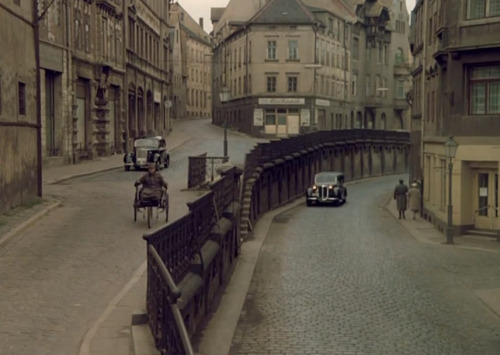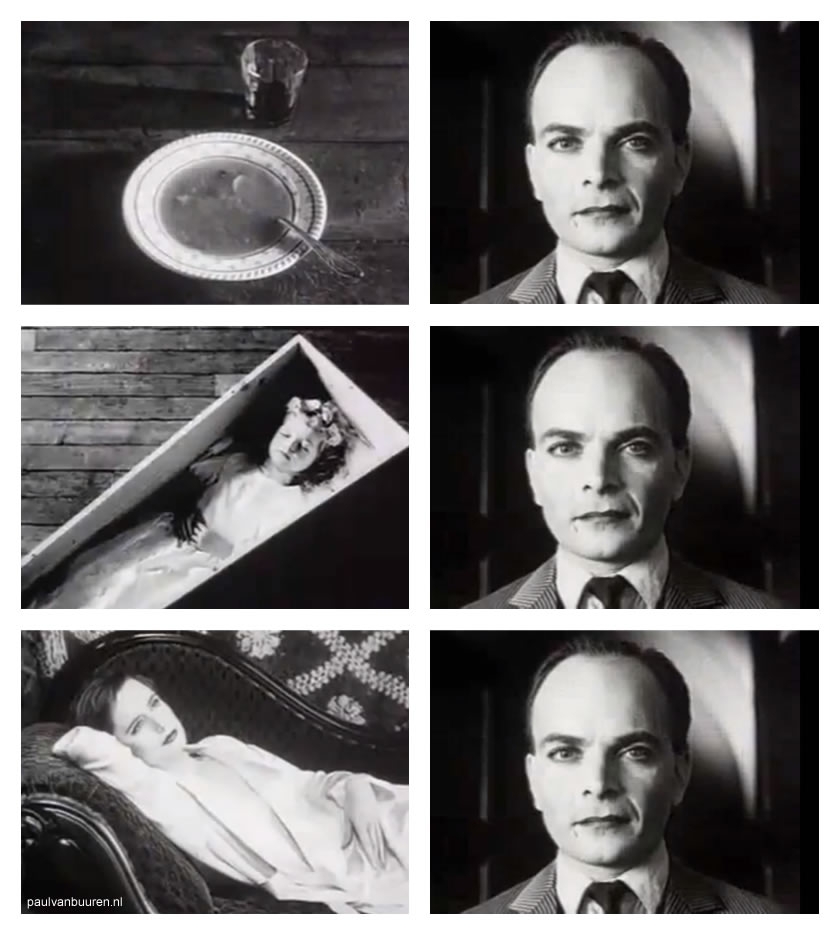

The screen then returns to Hitchcock's face, now smiling. In the first version of the example, Hitchcock is squinting, and the audience sees footage of a woman with a baby. The final form, which he calls "pure editing", is explained visually using the Kuleshov effect. Hitchcock, in the famous "Definition of Happiness" interview, also explains in detail many types of editing. It can be difficult to grasp what is so special about this style of shot, because it's so well used, but the significance is that Kuleshov invented this style of continuity. We will infer a connection between the imagery, and in the case of human reactions (below) will assume that the facial expression depicted is in reaction to the previous shot. What this means is that we, as observers, will naturally correlate the two images to be in reaction to each other. Sometimes referred to as 'Shot/Reverse Shot' This is a type of shot sequencing that is used in almost every TV/Movie production you could name: Lev Kuleshov noticed that if you juxtapose images in sequence, the human mind will naturally compose them into a linear, formal narrative. The general grammar of the shot has developed to embrace the styles of these three film makers, so we don't notice when they're being deployed. Typically, shots that don't adhere to elements of Soviet Montage are considered jarring or obtuse, such is our familiarity and preference for certain elements of continuity produced by the Soviet Masters typified by three figureheads of film making whose contribution to cinema can not be diminished. It was an epochal shift in cinema.Įlements of montage theory still exists and can be evidenced across every film making style in the world, such is the impact of the Soviet Masters they're just so common, so well adopted into the grammar of film making that we no longer flag them up as important. Imagine every film being staged and produced in the style of a US sitcom, and then someone coming along and introducing camera angles, crane shots, pulleys etc.

Prior to Montage theory, films were produced almost in the style of plays with a stage on which actions are performed, and the camera substituted for the position of an audience. Montage theory marked the beginning of a filmic language the idea that film is something to be edited in order to create meaning, and that composition is used to tell a story as much as what it is you're shooting with the camera.

Whilst it's understandable to proclaim that Montage Theory doesn't receive the amount of 'attention' it deserves from Hollywood, this is closer to the concept of Montage Theory (MT) not receiving overt 'credit' when it does appear largely due to its indelible influence.


 0 kommentar(er)
0 kommentar(er)
